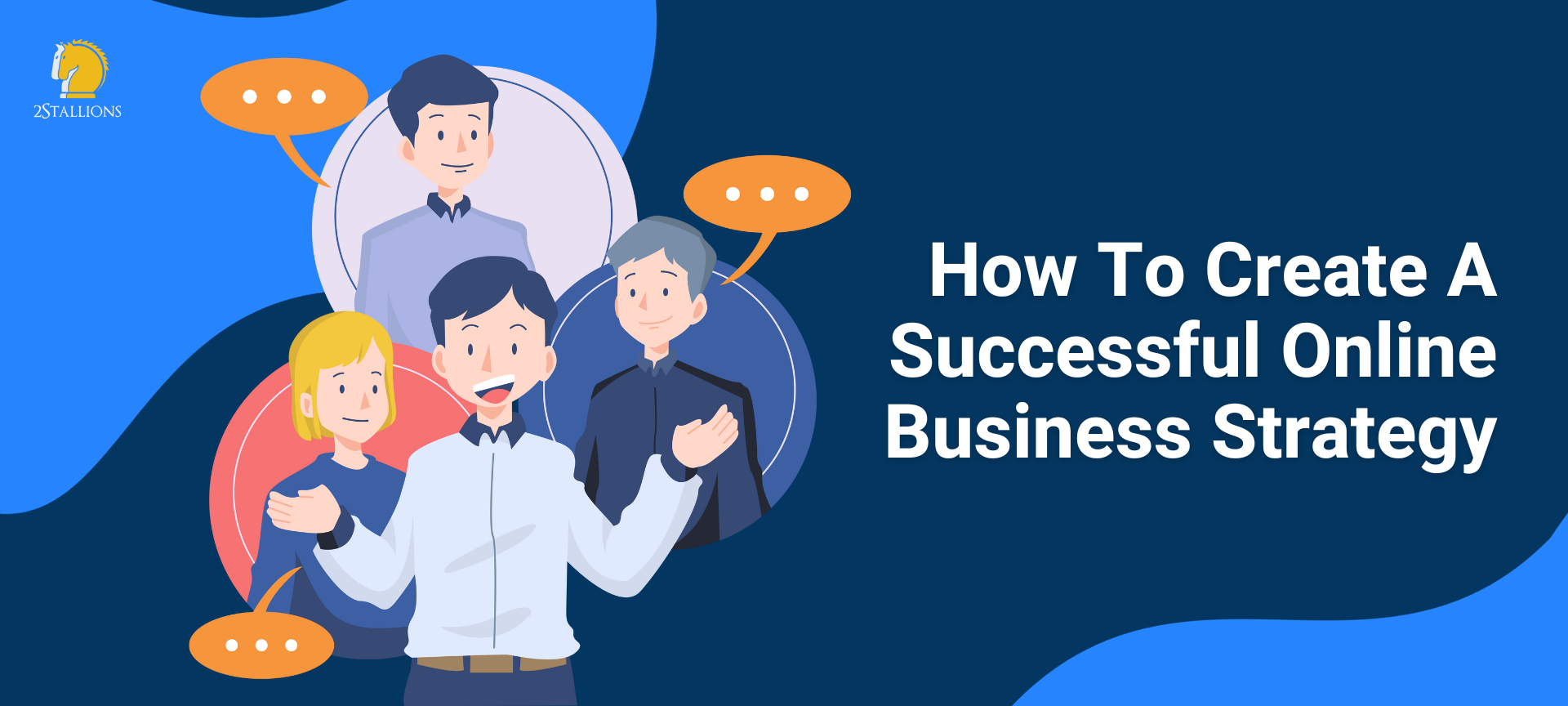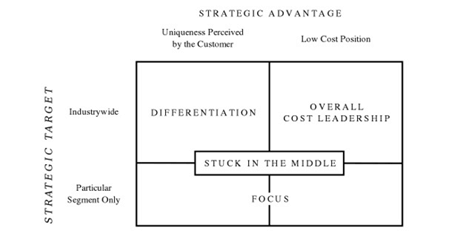SHARE

You just started a consumer-facing business (Congratulations!), and you’ve heard the internet is a great way to gain traction and get the masses flocking to your place of business. Without any online business strategy, though, you are likely to jump into the following scenario:
You start small and ‘simple’ – with a Facebook page. After all, almost 1.5 billion people, including all your friends, use this platform. You set it up and invite your friends to like your page to get the ball rolling. And then… your business loses its way online. You post regularly on your page but can’t get anyone apart from friends to like the posts – and even their enthusiasm wanes quickly.
[thrive_leads id=’8271′]
You discover that those 1.5 billion people you hoped for are only accessible with a fee. So you pay to promote each post and get more likes, but more business is needed in your store. After a while, you choose to cut your losses and let them slip into oblivion. You decide that you are going to do things’ old school’ instead and convince yourself that you are not losing out.
Many business owners sabotage their online presence through the need for foresight and investment in professional guidance. This article will dive deep into generic business strategies that can be adapted into successful online business strategies, from laying the groundwork to illuminating online strategies that your business can leverage to leave your brick-and-mortar business strategy behind.
 Michael Porter’s Generic Business Strategy
Michael Porter’s Generic Business Strategy
Navigating the concepts and principles of online business strategy can take time and effort. A great way to start is by familiarising yourself with generic business strategies. Michael Porter, a renowned American economist and professor at Harvard Business School, popularised the concept. His book “Competitive Strategy: Techniques for Analysing Industries and Competitors” introduced generic business strategies in 1980. Time and time again, the strategy has proven effective for multitudes of brands, online or offline. Porter highlights and emphasises the importance of business choosing one of three generic strategies:
- cost leadership
- differentiation
- or focus (also known as niche strategy)
These generic strategies provided a framework for major companies Walmart, Tesla, and Red Bull–to name a few–to understand and plan competitive positions within their respective industries. These strategies can be used individually or in combination, depending on a company’s goals, resources, and the competitive landscape. Successful businesses often adapt and refine their strategies to respond to changing market conditions and customer preferences. Keeping these in mind, continue reading to see how you can adapt Porter’s generic business strategy and implement it in your ONLINE business strategy.
 1. Know Your Motives
1. Know Your Motives
The first step in developing an online business strategy is knowing your objective. It’s crucial first to understand WHY you want an online presence. Is it to increase brand awareness? Provide alternative means for customers to make purchases? Generate leads for your business? This motive will aid in determining what assets you need for your online business strategy. Tesla’s notable efficacy in understanding its business, brand and products allows it to differentiate itself from its competitors.
Tesla utilises a differentiation strategy that reinforces the brand’s unique online presence and personalisation. By understanding its business motives, Tesla can promote higher-quality content across their online marketing channels and offer online exclusives to their customers. According to Consumer Reports, the company has the highest customer satisfaction rate compared to its competitors, with 91% of customers planning to buy or lease another Tesla for their next car. This, in turn, allows Tesla to further enhance their online business strategy to cater to their audience and highlight their unique selling propositions.
Unique Online Presence
You must understand that the online market is saturated with countless businesses looking for a breakthrough. This means that in order to succeed, your business must establish a unique and distinctive presence. From branding to means of communication, thoroughly identify your business purpose and figure out how to better express that through a robust online strategy. You must know what sets you apart to see the light of day for your business.
This is not an overstatement. Start listing down your vision, mission, objectives and USP. Follow that with a professional web design and user experience (UX) to create a visually appealing and easy-to-navigate website. (You need a website; we’ll explain why below.) Ensure your branding and messaging are correctly and consistently conveyed across online mediums.
High-quality Content
Once your business goals and purposes align with your brand, it’s time to start churning content to engage your audience. Content is vital to building trust with your audience by providing them with useful information that they can use to make informed decisions. You must factor content marketing into the agenda when constructing an online strategy. Everything revolves around marketing, and it’s how you feed your audience with insights, portray your brand, convince potential customers and more.
When and Where Do You Need Content?
-
Social Media
Online business strategy requires you to be on track with the widely used platforms worldwide. Social media is an effective method to reach a broader audience. Social media encourages businesses to post consistently to engage with each platform’s algorithm. Content is required to create thematic content–whether informative, raising awareness, educating, convincing and more–weekly (encouraged), bi-weekly or monthly that consistently communicates the brand’s voice.
-
Paid Advertising
Once you’ve laid the foundation for your social media content, it’s time for your business to explore paid advertising mediums. Businesses can boost their content in multiple ways without relying 100% of the time on the platform’s organic algorithm. Social media platforms allow for paid advertising that aids in ‘boosting’ posts. Additionally, businesses can explore PPC (pay-per-click) campaigns popularised by search engines (see: Search Engine Marketing) such as Google. Whether you’re aiming to drive sales or achieve other marketing goals, the success of your paid advertising campaigns heavily depends on the quality and relevance of the content you present to your audience.
-
Website
Every business needs a website these days. (Read more below to understand why you need a website.) One thing about a website is it relies on search engines to help filter out irrelevant content and boost relevant ones using their respective algorithms. To even be considered by the algorithm, you, of course, must have quality content. Google’s algorithm sets content as the utmost priority when ranking your website in their Search Engine Result Pages (SERPs.)
 2. Understand Your Customers’ Online Intent
2. Understand Your Customers’ Online Intent
To know what sort of online presence you need – you must understand your customers’ intent, i.e. how they find you and why they use a particular online platform.
How: Google conducted a study, which found that 4 in 5 consumers conduct a local search on search engines for product information, directions and operating hours of businesses near them. Speaking to existing customers of yours will also help you answer this question.
Why: The table below illustrates user intent when using search engines and social media – the two areas where consumers spend most of their online time.
| INTENT ON SEARCH | INTENT ON SOCIAL |
| Navigational: The user wants to go somewhere. | Socialize: The user wants to find out what friends have been up to and communicate with them. |
| Informational: The user wants to know about something. | Discover information: The user has information – photos, videos, articles, news, and brands – fed to them based on their likes and what their network likes. |
| Transactional: The user is looking to buy something. | Share: The user posts information on products/services/articles that interest them. |
The user intent explains why Google Ads is booming. Businesses know that visitors coming through search will likely turn into customers because they are actively seeking a solution. For Facebook, however, based on Forbes, 66% of marketers claim that social media indirectly impacts their business performance, and only 9% claim it can be directly linked to revenue. Users on social media don’t actively search for things – they tend to discover them through their news feeds.
Market Research
Conducting market research allows your business to have a deeper understanding of your business endurance through statistics and industry forecasts. Your business also benefits from market research by having a clearer view of your audience, potential customers, consumer behaviour and preferences, and more. Conduct thorough online market research using keyword research, social listening, and surveys to identify niche opportunities.
The insights gained can be utilised in various ways. Businesses can opt to create buyer personas to craft tailored content that resonates. Now that you have all the information about your target audience–preferably buyers’ personas–you can start brainstorming with your content team on how, when and where to employ the content marketing strategy.
 3. Website is Key to An Online Business Strategy
3. Website is Key to An Online Business Strategy
We came up with 6 reasons why your business needs a website, but to go a bit deeper (it gets technical here), it is to have your content appear in search results. Facebook does not allow Google to index the content on its pages, meaning the content you create on your page isn’t discoverable through Google search. If you have a website, you can take advantage of opportunities to be found organically by users looking for your products or services.
Your website is like your physical storefront. Build it according to your brand guidelines, but understand that making it look pretty does not guarantee any “footfall” or traffic. What helps you get traffic? Marketing, of course. Getting your website indexed by Google so that Google knows your website exists is just the first step in a long journey to online success. The results on the first page of Google get 71.3% of the clicks for all search results. In a nutshell, if you’re not on the first page of Google, you won’t get much traffic in general.
 4. Online Marketing to Attract Your Target Audience
4. Online Marketing to Attract Your Target Audience
How do you get to the first page? Focus your online business strategy towards Search and Social media once your website is up.
Search Engine Marketing & Optimisation
Your search options are Search Engine Optimisation (SEO) and Search Engine Marketing (SEM). SEO is a long-term approach that helps your website rank organically on search results. The white-hat technique recommended for improving your SEO is content marketing. Write articles on topics within your business domain that users would search for or find interesting. Share these on your social media channels. Use traffic drivers like guest posting on ‘authority’ blogs in similar domains to get a backlink and engage an interested audience.
Other traffic drivers include YouTube (for videos) and Slideshare (for slide decks). All these pieces of content would rank for many keywords that drive targeted traffic back to your site from search. Search Engine Marketing (SEM) provides an immediate possibility of showing up on Google’s homepage through paid advertising. Besides Google, your advertising can also show up on related sites on the network of sites that use Google Adsense.
Social Media Marketing
The number of social media platforms out there can be overwhelming. There is Facebook, YouTube, Twitter, Pinterest, Instagram, LinkedIn, and Reddit, to name a few. Recognising that not all platforms are relevant to your business is essential. Choose the ones that align best with your objectives. For example, Facebook can be a great way to provide customer service and increase brand awareness, and that may be the only tool you need. However, an eCommerce brand with product photos could better include Pinterest and Instagram in its online business strategy.
Ecommerce or Online Marketplace
Walmart’s commitment to its online business strategy is evident in creating a user-friendly website and its online marketplace mobile app, contributing to a seamless and efficient online shopping journey for customers. Walmart’s approach aligns perfectly with its overarching business strategy, emphasising cost efficiency. This strategy resonates with Porter’s first generic business strategy – the cost leadership strategy.
The combination of cost-efficiency and a robust online marketing strategy allows Walmart to rake up to $53 billion in ecommerce revenue for Walmart U.S., followed by $20.3 billion for Walmart International in 2023. Considering the boom of ecommerce and online shopping in this technologically advanced era is essential. When you’ve made up your mind, you’ll need to consider between ecommerce or an online marketplace to promote your products (or business.)
5. Creating A Robust Online Business Strategy
Your strategy needs to frame every platform you target and cover the fundamentals: how, what, and when. All your online assets should have key performance indicators (KPIs) analysed every period of your choosing (usually monthly or quarterly) and tweaked accordingly.
The infographic below, titled ‘Ins and Outs of Web Traffic’, shows how your online actions will drive traffic back to your website. This should give you a clearer understanding of how your online assets rely on each other for the overall benefit of your business and aid in formulating your strategy.
The online business strategy you develop keeps you focused on your motives. Yet, it’s equally important for this document to remain flexible and adaptable as you learn what does and doesn’t work for your business. Want to learn more about how we can help refine your online business strategy? 2Stallions Digital Marketing Agency is based in APAC and has extensive experience helping businesses construct online strategies. Have questions or additional insights?
Originally published: 23 June, 2016
Updated: 17 September, 2023
Supercharge your brand’s reach with our unbeatable online marketing services. Seamlessly unite your campaigns using our state-of-the-art omnichannel marketing system for epic impact. Join forces with us and let’s conquer success together!
Frequently Asked Questions About Online Business Strategy
What Is an Online Business Strategy?
An online business strategy is a roadmap that outlines how a business intends to achieve its goals using the internet. It encompasses elements like eCcommerce, digital marketing, online branding, and customer engagement, tailored to leverage online platforms and tools effectively.
How Do You Plan Online Business Strategies?
Planning online business strategies involves:
- Defining clear objectives and KPIs.
- Analysing your target audience and their online behaviours.
- Identifying the best online platforms and channels for your audience.
- Creating a content and engagement plan.
- Allocating resources, including budget and manpower.
- Implementing, monitoring, and continuously adjusting the strategy based on analytics and feedback.
What Is The Strategy of Online Marketing?
An online marketing strategy is a plan to promote products, services, or brands online. It can involve a mix of SEO, PPC advertising, content marketing, email marketing, social media marketing, affiliate marketing, and more, all tailored to effectively reach and engage the target audience.
What Is a Good Business Strategy?
A good business strategy aligns the company’s resources and capabilities with market demands, providing a competitive advantage. It should be clear, actionable, flexible to changing market conditions, and focused on sustainable growth and profitability. Effective strategies often involve:
- Understanding customer needs.
- Identifying unique selling propositions.
- Regularly reviewing and adjusting to stay ahead of competitors.









